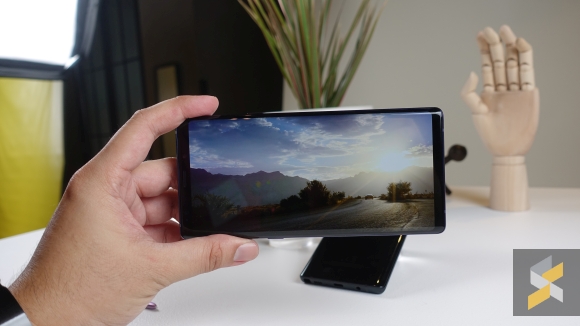When the Galaxy S9 and S9+ were introduced, DisplayMate says it had the best performing smartphone display. With the new Galaxy Note9, Samsung is raising the bar higher with the most advanced OLED display with a Full-Screen design.
According to DisplayMate’s lab tests, the Galaxy Note9 records a very high absolute colour accuracy of 0.5 JNCD (Just Noticeable Colour Differences). They remarked that it’s visually indistinguishable from perfect and it’s significantly higher than last year’s Galaxy Note8. For better visibility outdoors, it pushes a brightness of 710 – 1,050 nits in situations where there’s high ambient light. Although the peak brightness is lower than the Galaxy Note8’s 1,240 nits, the Note9’s screen is overall 27% brighter when the entire screen is showing all white and it also offers 32% higher contrast compared to the Galaxy Note8.
The Galaxy Note9 can also display HDR content and it has ambient light sensors on both sides of the device for an improved automatic brightness response. In terms of viewability from different angles, a typical LCD will experience at least 55% loss in brightness at a 30-degree angle but the Note9 only loses 27% in brightness from the same 30-degree angle. You can check out the full evaluation over at DisplayMate.









